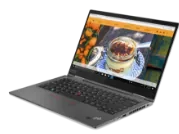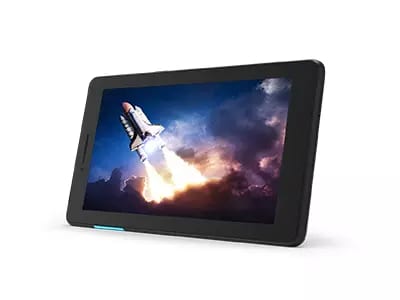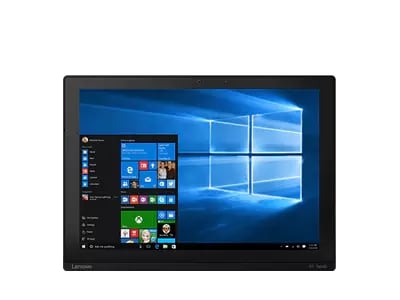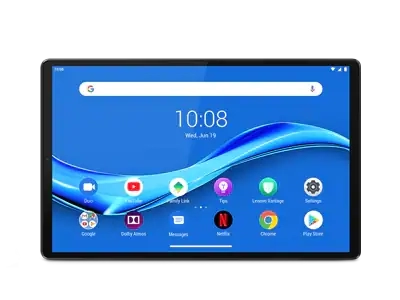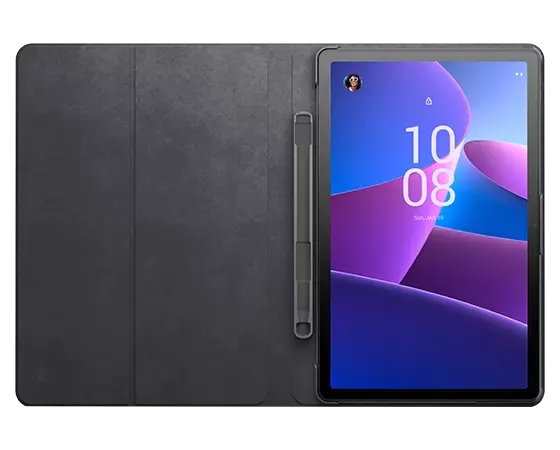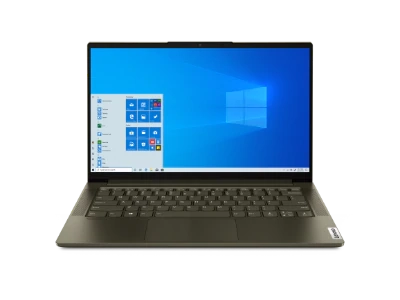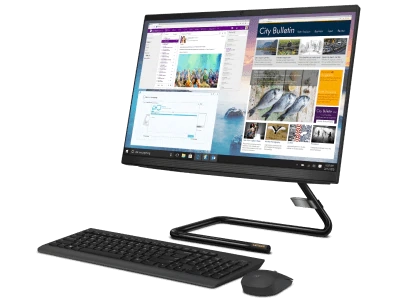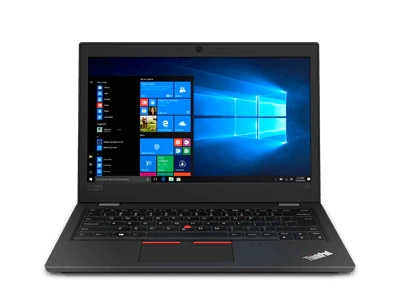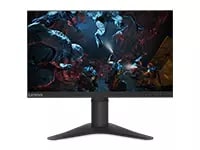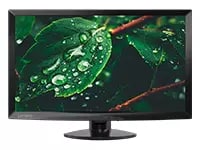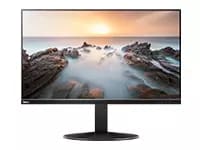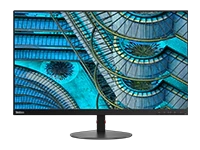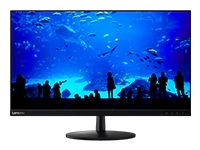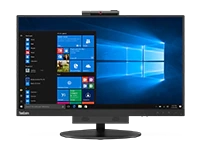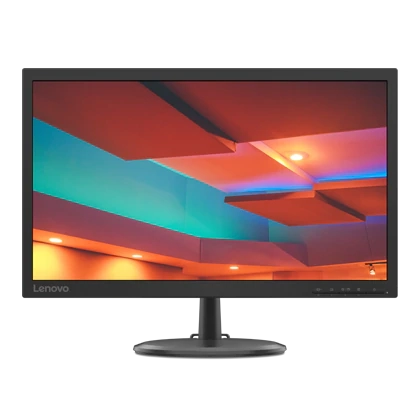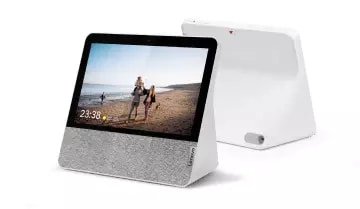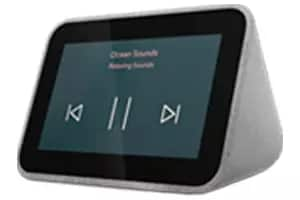How Do I Connect my Laptop to my TV?
The options for connecting a laptop to a TV just keep expanding. Tried-and-true methods, such as using HDMI or DVI cables, are easier than ever, with higher maximum display resolutions and automatic device-to-device syncing. Or you can go cable-free using new wireless screen-sharing solutions -- including some that require no additional hardware such as dongles or set-top receivers.
Connecting a laptop to a TV wirelessly
Two of the most popular wireless methods for displaying a laptop screen on a TV are Google Chromecast and the screen-casting tool that's built into Microsoft Windows 10, based on technology called Miracast. [As Lenovo is a PC company, we're limiting this screen-sharing discussion to the Windows- and Android-based laptops, tablets and Chromebooks that we sell. Users of Apple iOS devices might wish to review a separate article, What is Apple TV?]
Connect laptop to TV: Windows 10
If you've got a Windows 10-based laptop and a compatible TV, one of the easiest ways to transmit your laptop screen to your TV is to use the new screen-casting capabilities that are built into the Windows 10 interface. Just go to the Action Center and click Connect. The laptop will scan for and give you options to connect to any nearby Miracast-enabled device.
The beauty of technologies such as Miracast is that they don't rely on your home/office wireless network. Instead, signals are transmitted via Wi-Fi Direct, which has a shorter signal range but enables device-to-device streaming without a central router.
The newer your TV, the more likely it is to already be Miracast-compatible, eliminating the need for extra hardware or adapters. But Windows 10 systems can connect to older TVs, too. You just need to add one of the relatively low cost, set-top streaming units available from Roku, Amazon or others, many of which include Miracast options (once connected, look for the unit’s "screen mirroring" settings).
Connect laptop to TV: Chromecast
Google Chromecast works either by connecting a physical Chromecast device to virtually any TV or by using the Chromecast capabilities that are built-into many of today's newest models, including so-called "Android TVs" from SONY, LG and others. Chromecast is very popular for traditional media streaming, so it's comparable to devices from Amazon or Roku for watching content from Hulu, Netflix, and so on. But you can also use Chromecast to transmit or "cast" a browser window or your full laptop display.
The key to using Chromecast to view your laptop screen on your TV is the Google Chrome browser, which means you can use it on everything from a Chromebook (where Chrome is the default) to a tablet or laptop on which you load Chrome. But as long as you're using Chrome, it's super easy: Just right-click anywhere in your browser window or go to the primary Chrome menu (upper right corner) and select "Cast...". Chrome will automatically scan for and allow you to connect to nearby compatible devices. Then you'll choose to either "Cast tab" (to view and navigate within your current Chrome browser tab) or "Cast desktop" (to view and use your laptop's full desktop work area).
A particular advantage of Chromecast is that its popularity has led many media websites to offer special "Cast" buttons that let you switch from simply casting a Chrome tab that's playing a YouTube video to casting the video directly from YouTube to your TV. This method is said to provide a smoother viewing experience for movies, games, and other content that's susceptible to transmission lags.
Connecting a laptop to a TV using cables
There are multiple options for connecting a laptop to a TV using cables such as HDMI, DVI or even old-style VGA. The key is finding the best cable option that works with the ports you’ve got on your laptop and TV.

Connect laptop to TV: HDMI
If your laptop has an HDMI (High-Definition Multimedia Interface) output – and virtually every laptop does -- your best cable-oriented laptop-to-TV option is probably HDMI, since it can carry both high-resolution video and audio signals. Some tablets and ultraportable laptops have just Micro HDMI or Mini HDMI ports, but it’s easy to find cables that convert from micro/mini to full size.
Connecting is easy. Simply plug into an HDMI port on your TV and choose the appropriate input option for the port. If your laptop screen doesn’t appear automatically, toggle through the display options on your laptop until it does.

Connect laptop to TV: DVI
You can also use your laptop’s DVI (Digital Visual Interface) port, if it’s got one.
DVI defaults to video-only, so it’s most useful for simple tasks such as displaying a spreadsheet for group viewing. But if the laptop’s video card supports it, you can use a special DVI-to-HDMI cable to transmit your laptop’s video and audio to the connected TV.

Connect laptop to TV: VGA
Old-style VGA may still be an option -- provided your laptop and TV are equipped with VGA ports (increasingly uncommon).But again, a VGA (Video Graphics Array) cable only carries video signals.
To hear your laptop sound through the TV, you’ll need to add a mini-jack connector or a mini-jack splitter with a 3.5mm audio RCA cable.

Connect laptop to TV: Mini Jack
Another laptop-to-TV connection option – but again, for audio only -- is a mini-jack connector. Use it to connect from the laptop’s headphone port to a mini-jack slot on your TV (if available).


Limits: Orders limited to 5 computers per customer. For larger quantities, go to the “Where to Buy” section of the website for details of resellers and retailers of Lenovo products
Offerings and Availability: All offers subject to availability. Offers, prices, specifications and availability may change without notice. Product offerings and specifications advertised on this website may be changed at any time and without notice. Models pictured are for illustration purposes only. Lenovo is not responsible for photographic or typographic errors..
PCs shown here are shipped with an operating system.
Prices: Web prices advertised include VAT. Prices and offers in the cart are subject to change until the order is submitted. *Pricing - savings referenced off regular Lenovo web prices. Reseller prices may differ from those advertised here.
**Battery: These systems do not support batteries that are not genuine Lenovo-made or authorised. Systems will continue to boot, but may not charge unauthorised batteries. Lenovo has no responsibility for the performance or safety of unauthorised batteries, and provides no warranties for failures or damage arising out of their use. **Battery life is based on the MobileMark® 2014 methodology and is an estimated maximum. Actual battery life may vary based on many factors, including screen brightness, active applications, features, power management settings, battery age and conditioning, and other customer preferences.
Finance is provided by Duologi. Duologi is the trading name of Specialist Lending Ltd.
General: Review key information provided by Microsoft® that may apply to your system purchase, including details on Windows 10, Windows 8, Windows 7, and potential upgrades/downgrades. Lenovo makes no representation or warranty regarding third-party products or services.
Trademarks: Lenovo, ThinkPad, IdeaPad, ThinkCentre, ThinkStation and the Lenovo logo are trademarks of Lenovo. Microsoft, Windows, Windows NT, and the Windows logo are trademarks of Microsoft Corporation. Ultrabook, Celeron, Celeron Inside, Core Inside, Intel, Intel Logo, Intel Atom, Intel Atom Inside, Intel Core, Intel Inside, Intel Inside Logo, Intel vPro, Itanium, Itanium Inside, Pentium, Pentium Inside, vPro Inside, Xeon, Xeon Phi, Xeon Inside, and Intel Optane are trademarks of Intel Corporation or its subsidiaries in the U.S. and/or other countries.© 2023 Advanced Micro Devices, Inc. All rights reserved. AMD, the AMD Arrow logo, Athlon, EPYC, FreeSync, Ryzen, Radeon, Threadripper and combinations thereof are trademarks of Advanced Micro Devices, Inc. Other company, product or service names may be trademarks or service marks of others.






